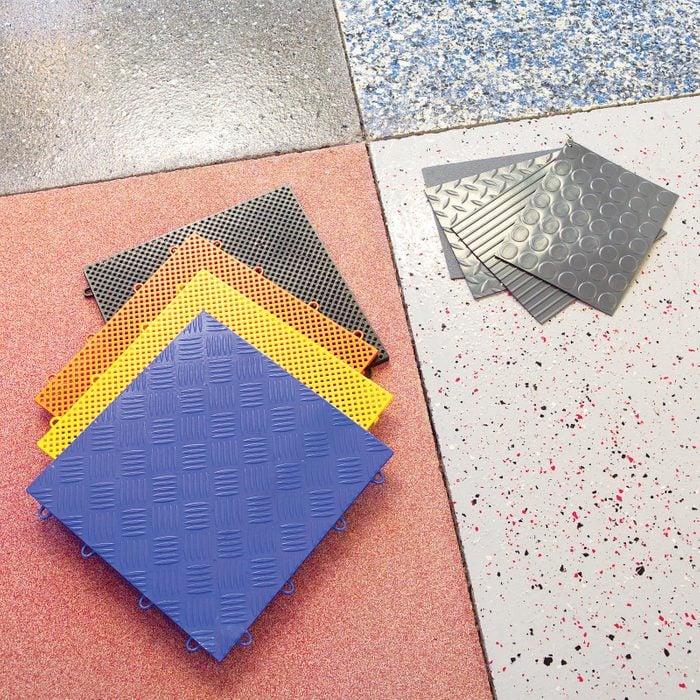Types of Garage Floor Coverings
There are two general types: coatings and coverings. If your garage floor is in good condition, you can pick either one. But if you have a pitted garage floor, or one with lots of cracks or imperfections, a covering is better because it hides damage. Here is your guide to seal cracks in concrete garage floor. A coating, even a low-sheen version, has a tendency to highlight blemishes.
Coverings are also immune to moisture problems that can make coatings peel.
Garage floor coatings
Coatings include floor paints, epoxy paint, stains and sealers. Coatings generally cost less than coverings if you apply them yourself. They protect against stains, corrosive chemicals (like road salts) and moisture penetration. But coatings can fail for two reasons: damp concrete and incomplete floor prep.
Coatings can’t be used where ground moisture rises through the concrete and keeps it consistently damp. Moisture prevents the coating from sticking to the concrete, and the coating soon de-laminates, chips and flakes. That’s why it’s critical to test your concrete slab for moisture before you apply a coating.
The main disadvantage? Coatings require several hours of careful floor prep.
Depending on how dirty or greasy your floor is, this can include intensive cleaning with a pressure washer using solvents or degreasers to remove any sealers, grease or previous coatings. You need to repair cracks, holes and other surface problems, then finally etch the concrete with muriatic acid to leave it completely clean and penetrable.
Look at online reviews to decide the best garage floor paint for your needs.
Garage floor coverings
Coverings come in interlocking tiles and rollout mats. The big advantage is how fast and easy they are to use. You can cover the floor of a three-car garage in a single morning. And the only prep involved is a good thorough sweeping or vacuuming.
Best of all, coverings hide cracks and craters and go right over damp concrete, so they can make a nasty floor look better than new. The downside: Price. Coverings can easily be four or more times as expensive as coatings.
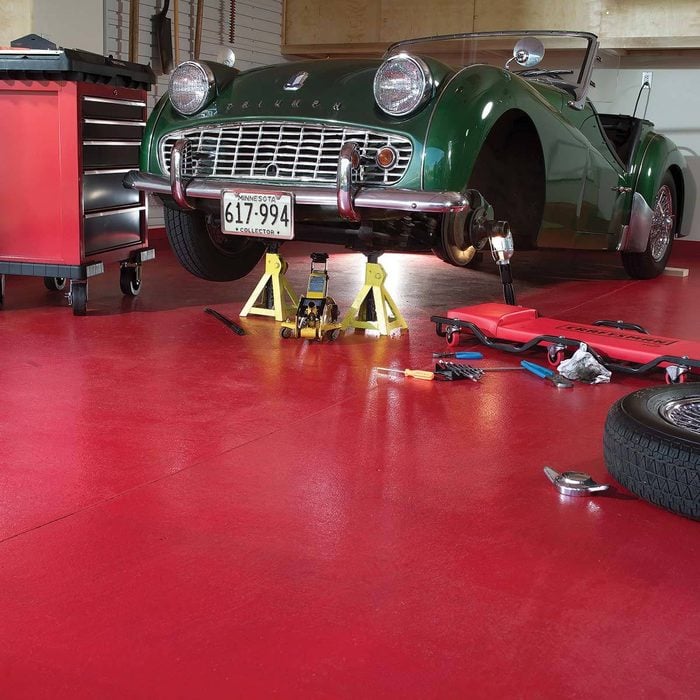
Garage Floor Paint
Garage floor paint is just a tougher version of the kind that goes on walls. It’s by far the least expensive coating. You roll it on just like other types of paint, with no tricky, unfamiliar steps. It’s also easy to touch up damaged areas or re-coat the floor completely.
Latex floor paint is easier to apply and clean up than oil-based paint. It dries to a low-sheen flat finish, while oil dries to a high gloss. Oil-based paints must be used with a primer coat and are generally more durable than latex.
Overall, floor paint isn’t as tough as other coatings, and it’s especially vulnerable to road salts and other chemicals. Under typical conditions, you’ll have to touch up areas every year or two.
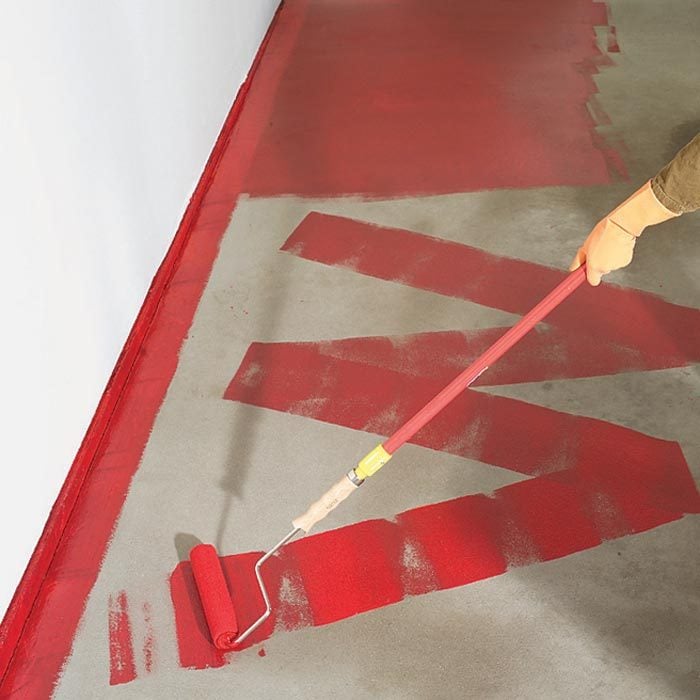
Epoxy Paint
Most epoxies are two-part formulas you mix just before rolling them on. (One-part epoxies come premixed.) With proper site preparation and application, this is the toughest floor you can get — and a glossy, beautiful one at that.
Epoxies can be tricky to work with because the floor prep is so critical, and you have to work fast to apply them before they harden. Also, you can’t drive on them until they’ve cured completely, which can take up to a week.
A typical DIY epoxy garage flooring kit provides enough primer (or sealer) and epoxy to apply one coat of each to an average one-car garage. For extra durability, consider applying a second epoxy coat or a finish coat of urethane sealer. Depending on wear, you may need to re-coat every three to five years.

Stained Concrete Garage Floor
A concrete stain isn’t really a coating. It’s a translucent decorative coloring that soaks into the concrete and creates a pigmented, marbled appearance that resembles natural stone.
It typically requires two coats applied with a roller or sprayer, then immediately worked into the concrete with a nylon scrubbing brush. The stain itself doesn’t protect the concrete. After it dries, rinse the surface. then apply one or two coats of urethane sealer to protect against moisture, chemicals and stains. (See “urethane sealer” below.)
Depending on floor traffic, you may need to wax the sealer annually, and touch up the stain and reseal the floor every two years.
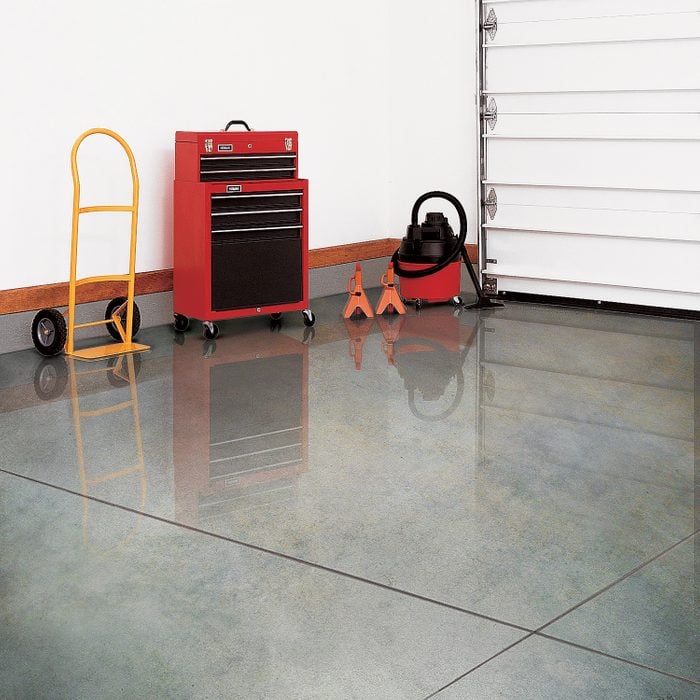
Garage Concrete Sealers
Concrete floor sealers are like floor paint, but tougher. After paints, they’re the least expensive coating, and they’re easy to apply with a brush or roller. They dry to a clear satin or semigloss finish depending on the product, and you can also get them tinted. There are water-based and solvent-based versions.
Acrylic/latex sealer
Like floor paint, acrylic/latex sealer is vulnerable to chemicals and isn’t as tough as epoxy, so it will benefit from an annual protective waxing or reapplication every few years. Acrylic/latex sealer will stick better to a concrete floor than urethane sealer, which is why it’s sometimes used as a primer for oil-based floor paint or epoxy.
Urethane sealer
Urethane sealer is significantly tougher than acrylic/latex sealer, but it doesn’t bond well with bare concrete. It provides a clear, high-gloss finish that resists chemicals better than epoxy alone and is less likely to yellow in sunlight. That’s why it’s used as a seal coat over epoxy and concrete stain.
However, urethane sealer is more expensive than acrylic. And solvent-based versions require the use of a respirator during application.
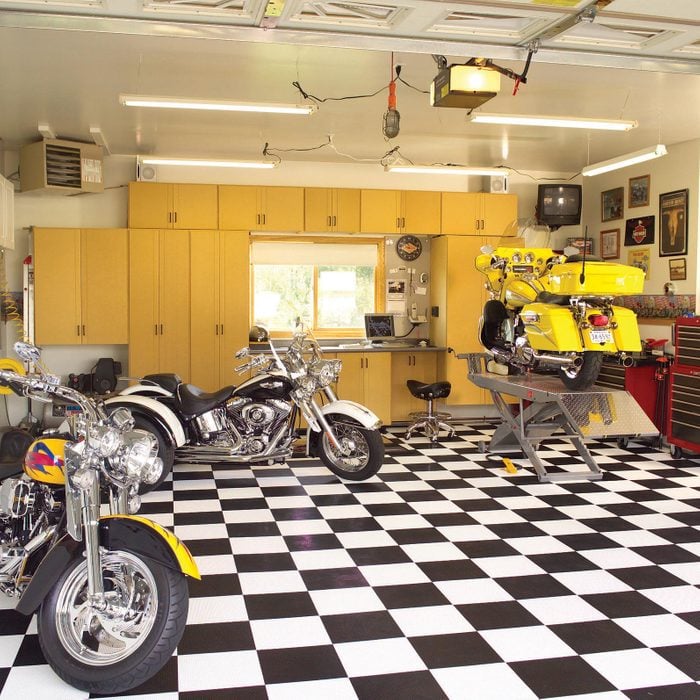
Rigid Snap-Together Tiles
These rigid tiles are made of stiffer plastic than the flexible tiles shown below. Because of that, they can handle heavier loads, important if you regularly use a car jack or kickstands. They also expand and contract less than flexible tiles during extreme weather conditions.
They come in many colors and styles, including perforated versions that drain spills and snowmelt, making mold beneath the tiles and slippery spots on top less of an issue. They’re easy to clean and are more chemical resistant than softer plastic tiles or mats.
They do make a clacking noise when you walk on them. Like the other coverings, they’re easy to install. All you do is line up the tiles, step on them and click the male and female loops together.
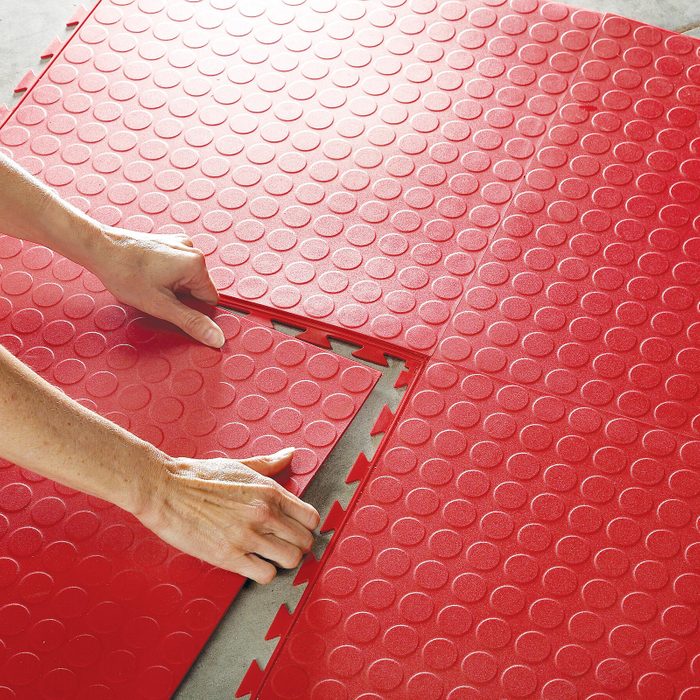
Interlocking Flexible Tiles
These are typically 12- by 12-inch or 18- by 18-inch flexible plastic tiles that come in a bunch of cool patterns and colors, allowing you to create custom designs in your garage.
To install, cut the garage floor tiles with a utility knife, then tap or press the interlocking edges together with a rubber mallet or wallpaper roller. They’re more slip resistant than rollout flooring. Compared with rigid snap-together tiles, they offer better resistance to liquid seepage through the seams and are more comfortable underfoot.
Like rollout mats, flexible tiles are subject to staining. But unlike mats, damaged tiles can be easily replaced. The tiles contract and expand in extreme temperature changes and with exposure to direct sunlight, so leave expansion room near walls and other obstacles.
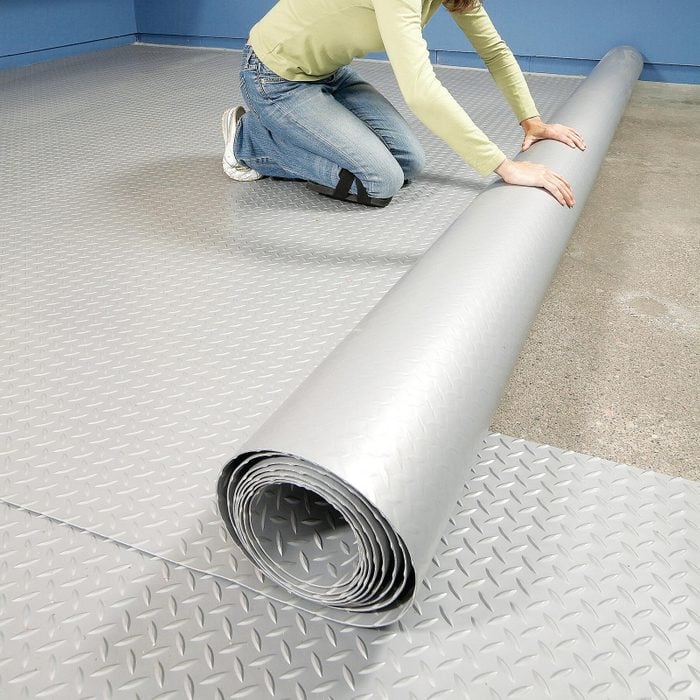
Garage Floor Mats
Rollout flooring mats are thick, rubbery products that come in a variety of lengths, widths, colors and patterns. You can use a single mat under a car or put several mats together to cover an entire garage.
The mats are easy to clean and move. To install, just sweep the garage floor paint, unroll the flooring and butt the edges together or overlap them, then trim to fit with a utility knife.
They’re durable, but like most coverings can be permanently stained by hot tires and chemicals. These mats are also slippery in snowy or icy weather and are susceptible to gouging from motorcycle kickstands, hot metal shards and gravel.
In extreme climates, they also expand and contract up to two percent. To ensure the mats can move during temperature fluctuations, don’t tape them to the floor at the edges.

What About Ordinary Vinyl Tile?
Vinyl composition tile (VCT) is the stuff commonly used in kitchens, schools and stores. Although it’s not recommended by the manufacturer for garages, many people install it there anyway. Under the right circumstances, it’s worth considering this garage flooring idea.
For one thing, it’s cheap. It also comes in lots of colors and patterns, so you can really use your imagination when designing your floor.
But with floor prep and application, VCT is closer to a coating than a covering. Once the concrete is clean and degreased, trowel on adhesive and lay the vinyl tile. Then wait a week before applying three or more coats of sealer, depending on how glossy and durable you want it.
VCT is best suited for temperate climates or a heated garage because damp subfloors and temps below 55 degrees can cause bonding problems. It’s also slippery when wet and susceptible to staining from salt and other chemicals. However, damaged tiles are inexpensive to replace.
